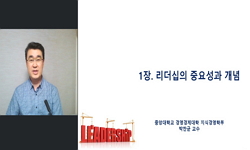This study analyzes the structural relationship between transformational leadership, work engagement, and mediators. Various mediators are derived from previous studies to derive the structure of the relationship between transformational leadership an...
http://chineseinput.net/에서 pinyin(병음)방식으로 중국어를 변환할 수 있습니다.
변환된 중국어를 복사하여 사용하시면 됩니다.
- 中文 을 입력하시려면 zhongwen을 입력하시고 space를누르시면됩니다.
- 北京 을 입력하시려면 beijing을 입력하시고 space를 누르시면 됩니다.
Transformational leadership, work engagement, and mediators : meta-analytic structural equation modeling
한글로보기부가정보
다국어 초록 (Multilingual Abstract)
The selection of the paper was aimed at journals published since 2000, and 104 articles that reported two or more correlations in the relationship between transformational leadership, work engagement, and mediators were selected. The mediators presented in the chosen research are needed satisfaction, self-efficacy, and meaning in work. A meta-analytic structural equation modeling was conducted using the correlation coefficients between classified transformational leadership, mediators, and work engagement.
As a result, the average direct effect size between work engagement and antecedent variables was in the order of transformational leadership (.496), need satisfaction (.426), meaning in work (.310), and self-efficacy (.204). Among the various direct effects, including mediators, transformational leadership showed the highest effect, indicating the highest positive impact on work engagement. In addition, A structural relationship between work engagement and antecedent factors was established, and a structural equation model was constructed. The average indirect effect size between work engagement and antecedent variables was in the order of transformational leadership-need satisfaction (.496), transformational leadership-meaning in work (.426). Self-efficacy had no indirect effect between transformational leadership and work engagement.
The MASEM results differed from the meta-analysis results, suggesting that the effect size of the two variables tends to be overestimated, and the relational role affecting the dependent variable can be distorted. The MASEM shows the factors' total, direct, and indirect effects. In future studies, it is necessary to devise a plan to increase the work engagement of organizational members by prescribing various leadership techniques and programs according to regional characteristics.
This study analyzes the structural relationship between transformational leadership, work engagement, and mediators. Various mediators are derived from previous studies to derive the structure of the relationship between transformational leadership and work engagement. A meta-analytic structural equation model analyzes the structural relationship between the variables.
The selection of the paper was aimed at journals published since 2000, and 104 articles that reported two or more correlations in the relationship between transformational leadership, work engagement, and mediators were selected. The mediators presented in the chosen research are needed satisfaction, self-efficacy, and meaning in work. A meta-analytic structural equation modeling was conducted using the correlation coefficients between classified transformational leadership, mediators, and work engagement.
As a result, the average direct effect size between work engagement and antecedent variables was in the order of transformational leadership (.496), need satisfaction (.426), meaning in work (.310), and self-efficacy (.204). Among the various direct effects, including mediators, transformational leadership showed the highest effect, indicating the highest positive impact on work engagement. In addition, A structural relationship between work engagement and antecedent factors was established, and a structural equation model was constructed. The average indirect effect size between work engagement and antecedent variables was in the order of transformational leadership-need satisfaction (.496), transformational leadership-meaning in work (.426). Self-efficacy had no indirect effect between transformational leadership and work engagement.
The MASEM results differed from the meta-analysis results, suggesting that the effect size of the two variables tends to be overestimated, and the relational role affecting the dependent variable can be distorted. The MASEM shows the factors' total, direct, and indirect effects. In future studies, it is necessary to devise a plan to increase the work engagement of organizational members by prescribing various leadership techniques and programs according to regional characteristics.
목차 (Table of Contents)
- Ⅰ. Introduction 1
- 1. Statement of the problem 1
- 2. Research questions 7
- Ⅱ. Literature review 8
- Ⅰ. Introduction 1
- 1. Statement of the problem 1
- 2. Research questions 7
- Ⅱ. Literature review 8
- 1. Transformational Leadership 8
- 2. Work engagement 16
- 3. The link between transformational leadership and work engagement 23
- 4. Mediator identification 26
- Ⅲ. Method 45
- 1. Inclusion & Exclusion criteria 45
- 2. Data collection procedures 46
- 3. Analytic approach 48
- 4. General Characteristics of the Analytical Subject Paper 57
- Ⅳ. Results 62
- 1. Meta-analysis using correlation coefficient 62
- 2. Modeling of MASEM 66
- 3. Discussion 74
- V. Conclusions and implications 80
- 1. Conclusions 80
- 2. Implications 82
- 3. Limitations and suggestions for future research 86
- References 87








